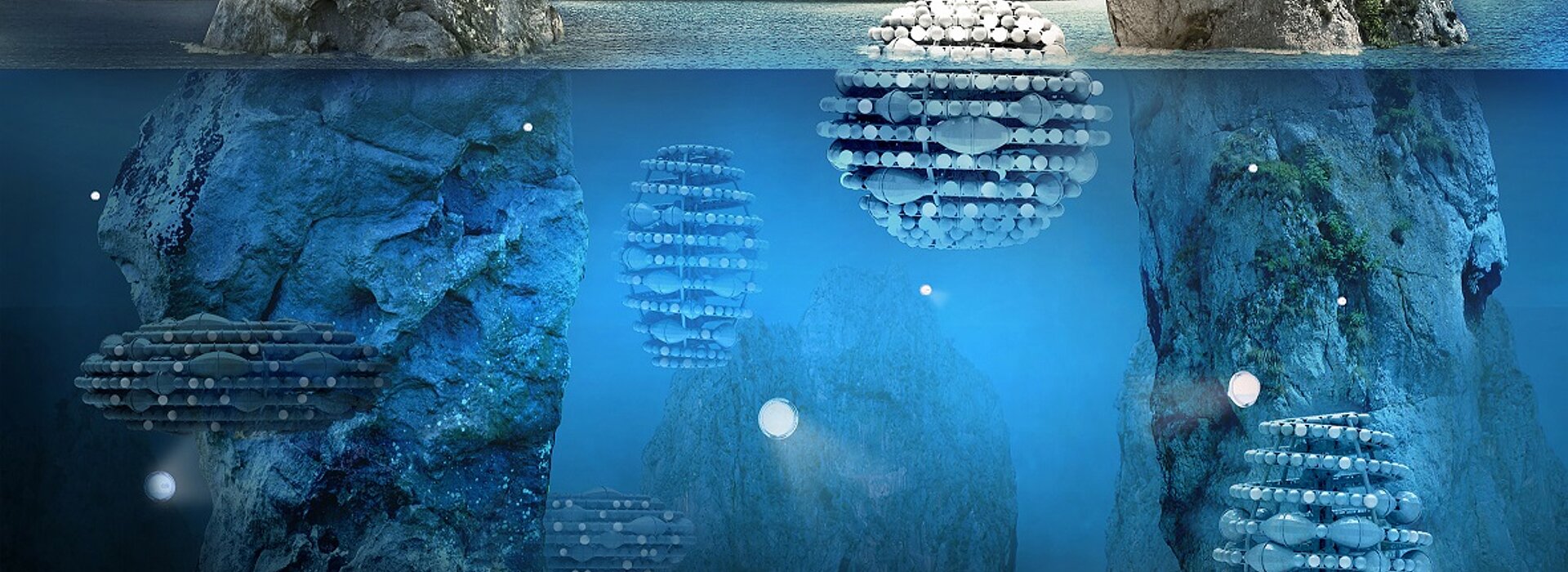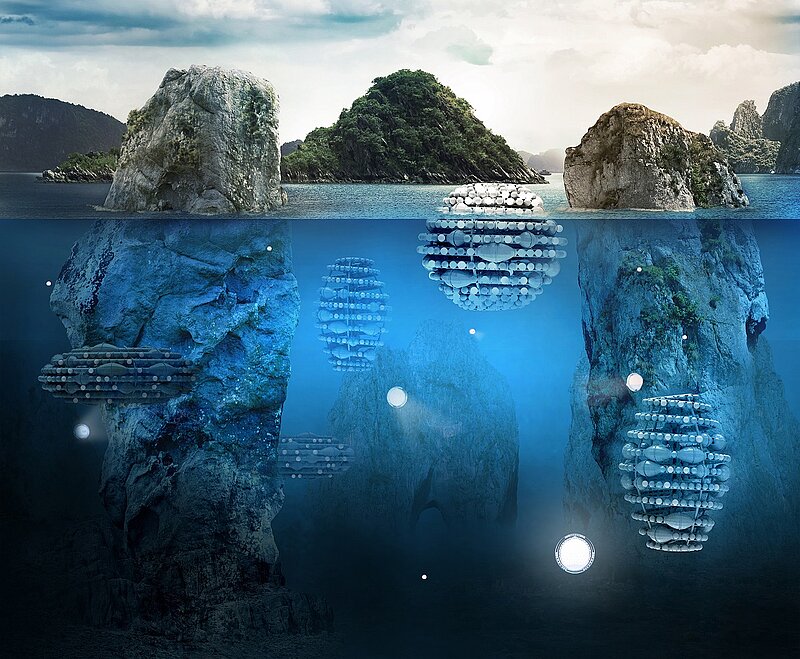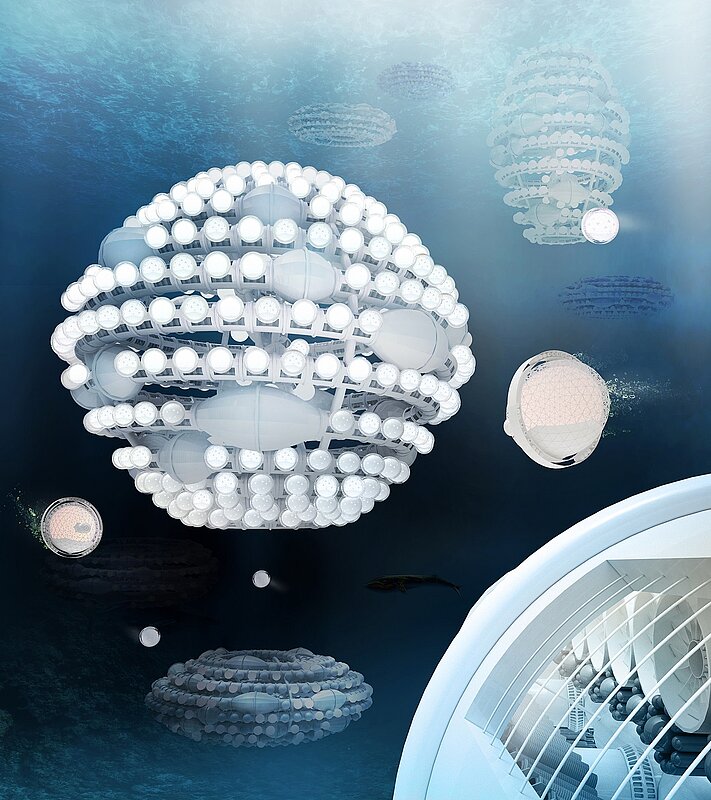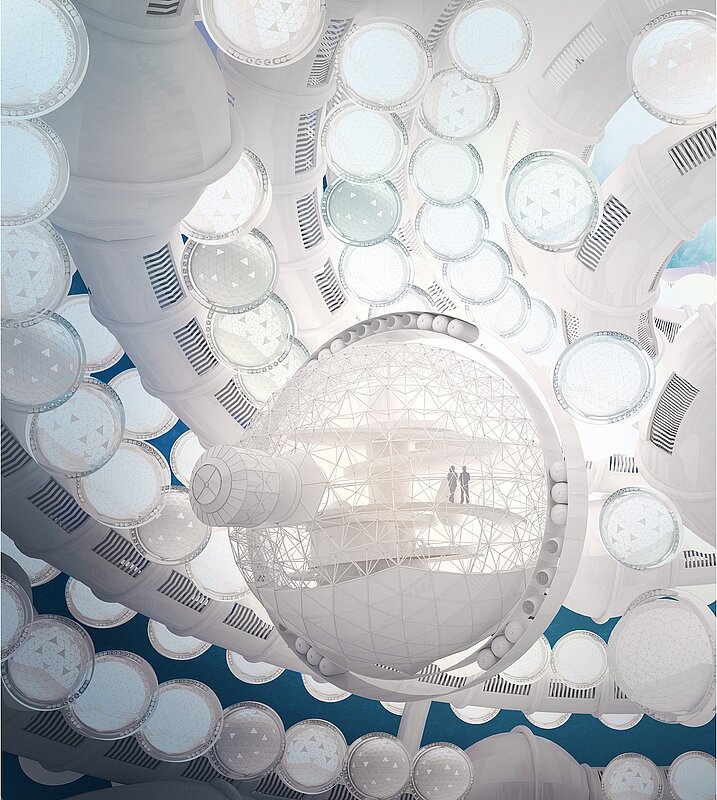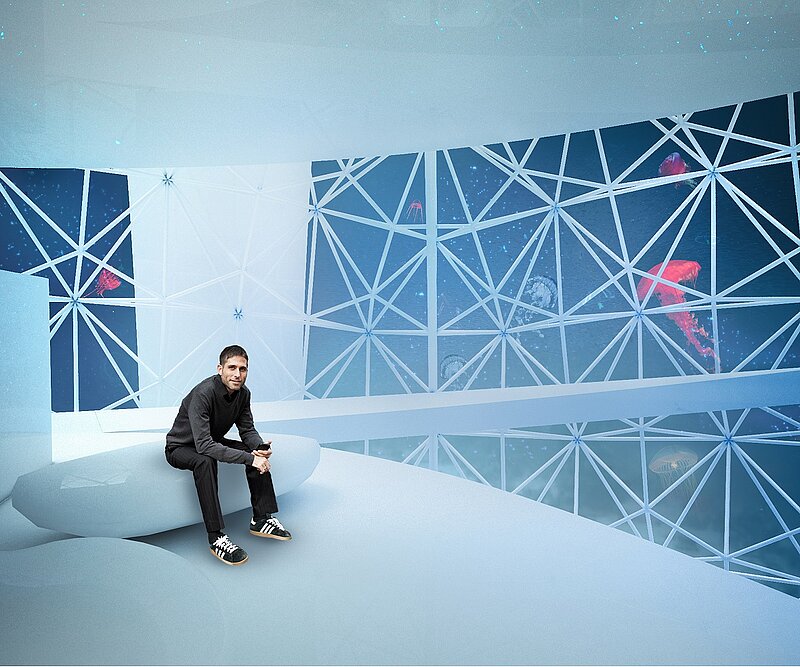GENESIS A new Generation of inhabitation
- Year2019
- LocationAtlantic Ocean, South Padre Island, Teksas, Stany Zjednoczone
To date, we have explored less than five percent of the world's ocean floor. We know more about the Moon and Mars than about our own planet. As oceans provide an endless wealth of knowledge, ignoring their impact not only limits possible paths of development, but also prevents the effective protection of our planet. After all, how many problems remain unsolved because we don't learn from oceans? Moreover, how can we protect and also feel safe living on a planet we don't fully understand? Therefore, it is fundamental to explore the oceans, not only for economic gain, but first and foremost to acquire a full awareness of life on the Earth.
Genesis was the first experiment that aimed to allow people live underwater. Started in the 1950's by Dr. G. F. Bond and supported by US Navy, Genesis paved the way for underwater habitat development. The main idea of the project, built on the heritage of the original Genesis experiment, was to enable us to explore the full potential of the oceans without any damage to the environment.
The next generation of Genesis is a complete bridge between the human world and that which lies hidden beneath the surface of the oceans. As a habitat completely independent from the surface, it allows for exploration of the seabed without the limitations of time or space. Genesis consists of two kinds of objects - main bases and residential units. Main bases serve as megastructures suppling residential units with energy and food. To optimize the absorption of energy and raw materials, it was designed as a moveable double spiral which can change its shape or location depending on the location and concentration of resources. As main base location is limited only to the energy and raw-material sources, residential units can explore the rest of the oceans. Due to the use of closed-circuit technology, both bases and residential units are sustainable, eco friendly and self-sufficient.
